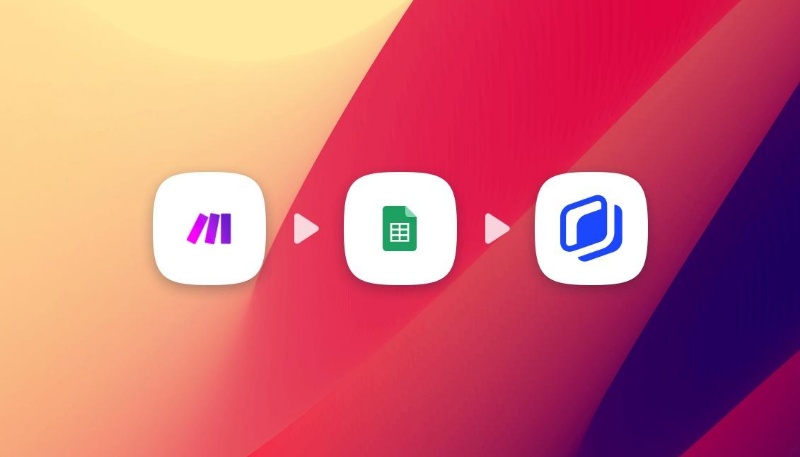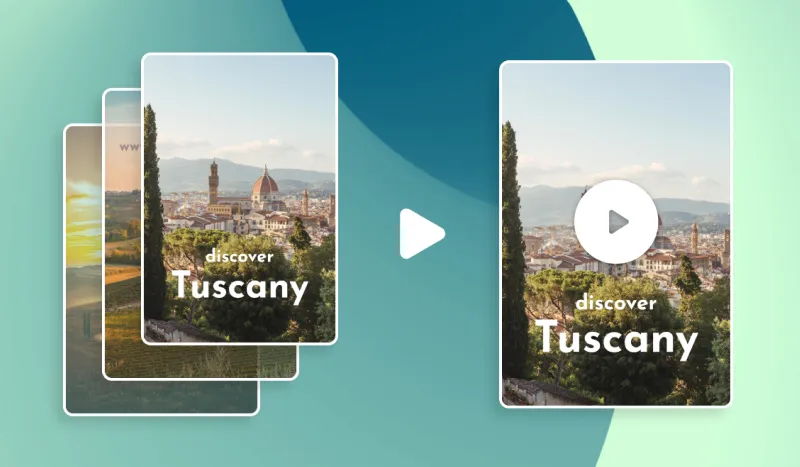From Digital to Print: How to Convert PDFs for High Quality Printing
From Digital to Print: How to Convert PDFs for High Quality Printing
.webp)
Printing from PDF with accurate color, exact fonts, high-quality graphics, and précised formatting can be a challenge. If the files are not prepared for printing, they can affect printing outcomes and result in missing text, color distortion, crop marks, and more.
But this difficult task can be a breeze if you have the necessary knowledge and tools. Yes, you heard it right! Always share print-ready PDFs to preserve the necessary elements and produce a high-quality final product.
If you don't know how to create print-ready PDFs from your screen, this article will guide you through creating a flexible PDF file for printing!
The Importance of High Quality Printing
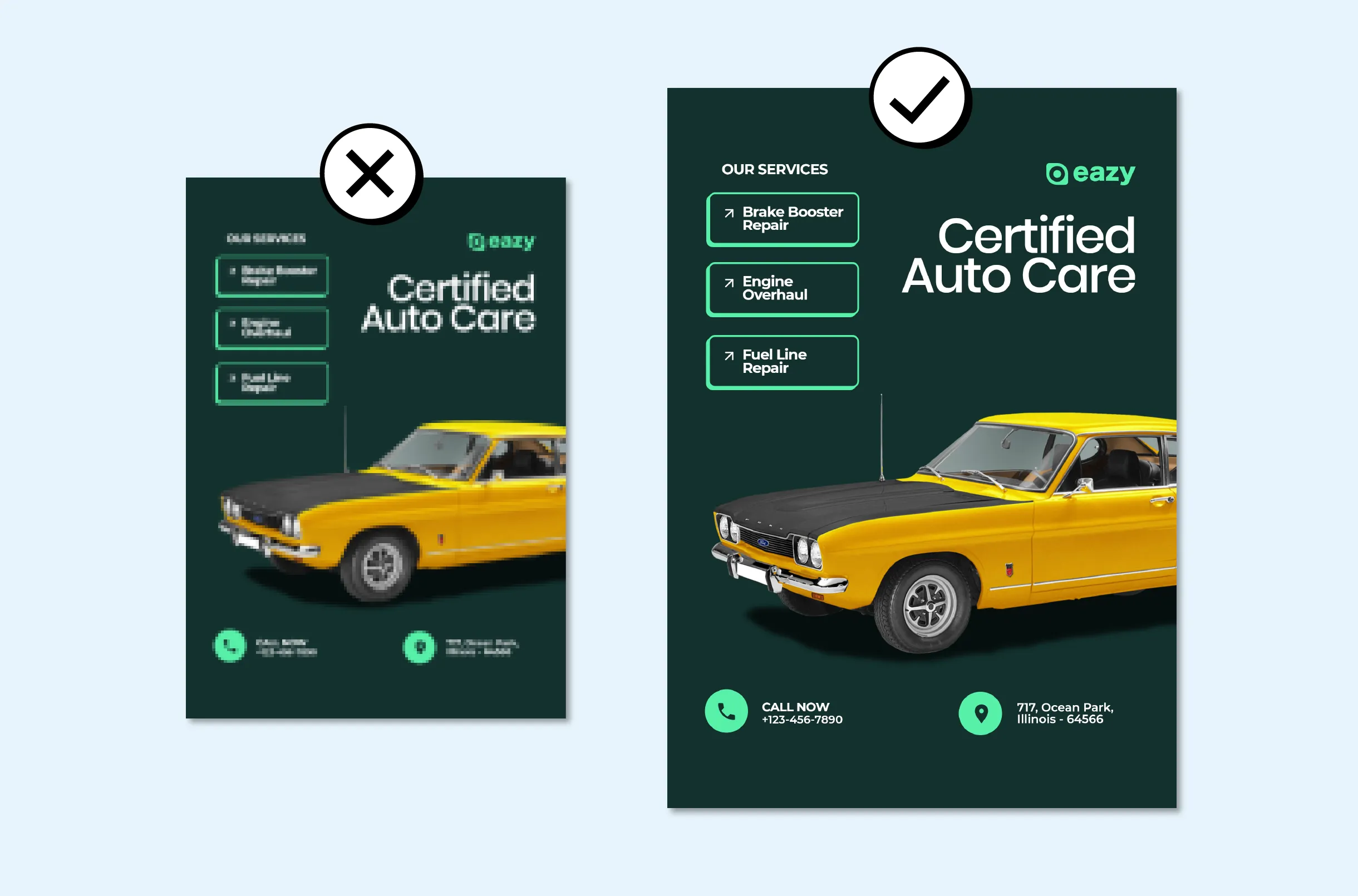
Printing materials are useful for all businesses, but their effectiveness depends on their quality. Remember that poor-quality printouts may convey a wrong impression or image of your brand, which can put potential new customers off.
On the other hand, high-quality printouts are always high-quality, include sharp text, assure accurate color production, and have consistent finishing. Ultimately, they improve communication and significantly impact a company's success. So, to make a significant difference, it becomes crucial for businesses to invest in high-quality printing.
Besides that, investing in high-quality prints also offers various other benefits, such as:
- High-quality printing materials improve efficiency and productivity and streamline the business process, ultimately saving cost.
- The printouts could be the first encounter that your customers have with your business. So, to make this first impression good, you need to invest in high-quality printing that can convey your message and a sense of value to your target audience.
- High-quality printed materials are always eye-catching, appealing, and easier to read. Thus, they improve brand awareness, allow you to reach potential customers, and foster customer loyalty.
- When investing in high-quality printouts, you show your audience that you value them.
- The high-quality printouts always look professional and make the customers believe that your products will be higher quality and more sophisticated, just like these printouts.
So, for now, you are well aware of the high-quality printouts and why they are so important; let's see where these high-quality printouts are used:
- Marketing Materials: Marketing printing materials are a company's assets. The most common example is brochures, but there are also flyers and posters. Businesses use all of these materials to grow their audience and, in conferences, to provide information regarding their products to visitors.
- Professional Documents: Most companies prefer high-quality printouts for professional documents. The printing quality of professional documents like presentations, reports, contracts, and invoices also matters the most because it improves their impact and credibility. Plus, it enhances legibility, understanding, trust, and a long-lasting impact.
What Are The Different PDF Formats?
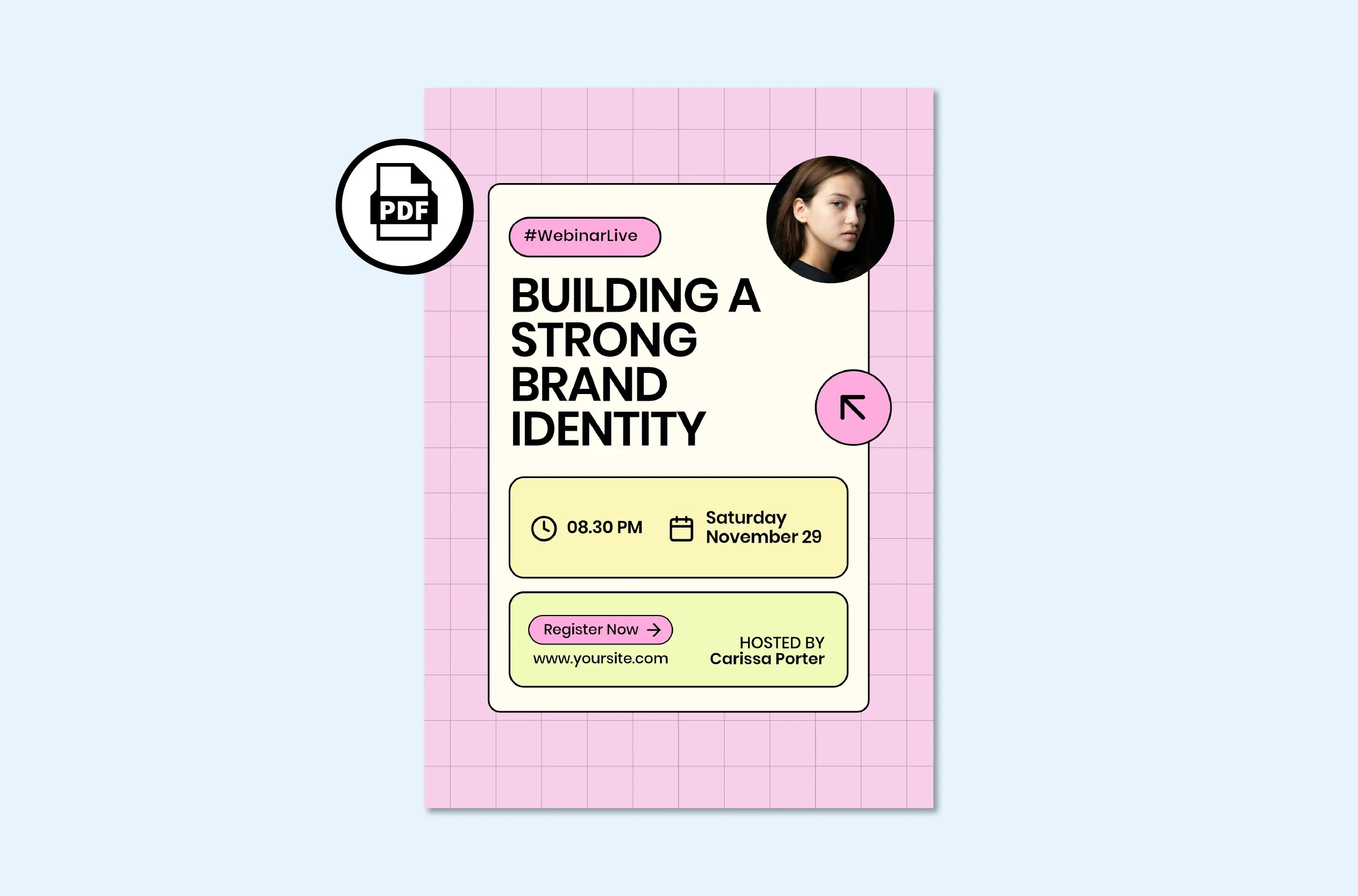
PDF is the most preferred file format if you are preparing a file for printing. They maintain the document formatting and important information like text, images, comments, and hyperlinking. The other advantage is sharing and viewing PDF files across the web without compatibility restrictions.
Besides that, PDF files protect sensitive information, as you can lock the PDF files simply for viewing or editing by restricting a few features and setting a password. But do you know how many PDF formats there are and which are best for printing? If not, move on to the next section!
Types of PDFs
Though portable document format (PDF) is commonly used, not all the PDF files you have ever used are the same. Yes, you heard it right. Over the years, PDF has undergone various changes, and now more than a dozen types of PDF files are available.
Each type of PDF file has its function and caters to the needs of several businesses around the globe. If you are curious to know which the different PDF formats are, here are the three main types of PDF standards:
PDF/A
It is a standard PDF file format used around the globe for archiving electronic documents. The A stands for archival, as the content remains preserved within the files. With PDF/A, users can view the files in their original appearance across different software in their original appearance.
This format differs from the standard PDF file format and is self-contained with all the elements (fonts, content, and color are embedded within the file). Thus, you can view and reproduce the file exactly as it was created, regardless of your device.
PDF/A also comes in different variants (PDF/A-1, PDF/A-2, PDF/A-3, PDF/A-4, and PDF/A-4f), each created by mixing various PDF/A conformance levels and standards. Every PDF/A defines various features and image compression technologies that preserve the content of your file.
PDF/X
PDF/X (portable document format exchange) is a variant of the classic PDF file designed for graphics exchange. These file formats allow the use of graphic information such as fonts, images, and color profiles.
Plus, PDF/X ensures no changes or fewer errors occur during printing. You cannot add video or 3D images to the files, so ensure everything is printable.
There are various versions of PDF/X, such as PDF/X-1a, PDF/X-3, PDF/X-4, and PDF/X-5. Each version has different features to meet the specific printing needs and projects.
PDF/E
PDF/E stands for portable document format engineering. It supports manufacturing and construction specifications, interactive media, 3D images, and animation. Most engineers, architects, and product design teams find this file format helpful, as it was introduced to address issues in large-format drawings, form fields, and multimedia.
These files can contain 2D and 3D drawings used in manufacturing, geospatial workflow, and construction. They facilitate the printing of technical and engineering documents and collaboration on these files (both interactive and non-interactive). PDF/E can boost company productivity internally and externally (with partners, customers, suppliers, and government organizations).
There are various advantages of using this file format, for example:
- You can rely on this file format to transfer or exchange information on any platform without losing any information.
- There is no need for any specific software application to view the files.
- You can easily add up any media element.
Choosing the Right PDF Format for Printing
Choosing the right file format is important when creating a document ready for printing to ensure the final printout meets the expected quality standards. Though several file formats exist, not all can assure clarity, details, and color fidelity.
PDF is preferred from all the available file formats as it can maintain formatting, encapsulate vector and raster graphics, and ensure consistency across different systems. Another advantage is that most design software lets users save or export files as PDFs.
But which PDF format is right for print, a standard or print-ready PDF? If you don't know, the next section will provide a detailed answer!
Standard PDFs Vs. Print-Ready PDFs
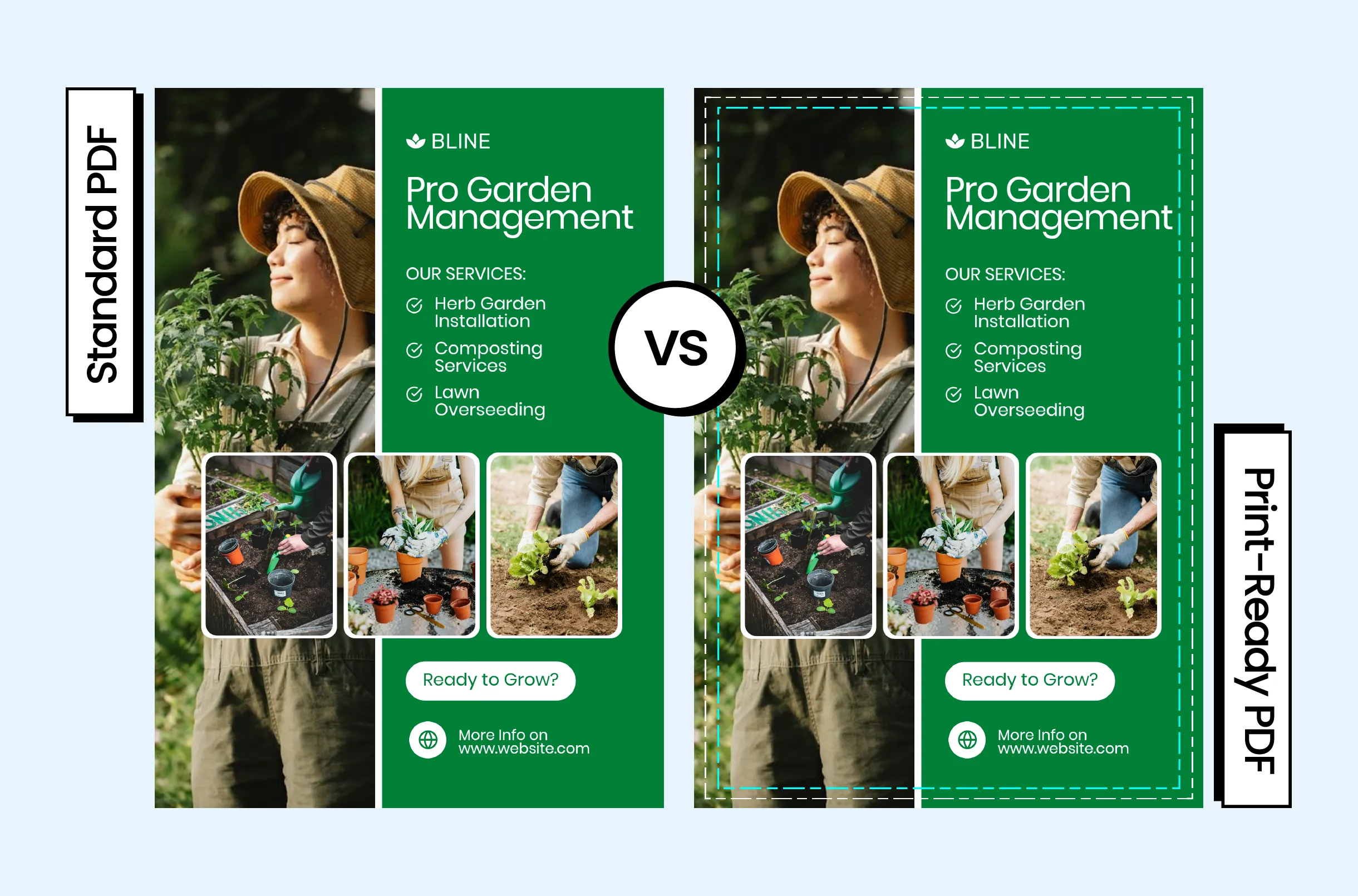
Standard PDF files are usually created for digital devices or screens (social media or websites). These files have lower image quality and small sizes, so you can easily attach them to emails. These file formats can also have other functions to enable interactivity, such as internal navigation and links, buttons, basic animation, and movie clips.
However, these files are not suitable for printing as they can result in poor-quality images and colors. So, in situations where you need high-quality printouts, you will need print-ready PDFs specifically created for printing purposes.
The print-ready PDF includes bleed and crop marks. These files ensure correct photo resolution, optimize font quality, produce excellent-quality printouts, and avoid color distortion. So, they tend to be larger and are usually sent through transfer services.
How To Create A Print-Ready PDF From Your Screen?
PDF workflow is an industry-standard as it is more reliable, assures higher quality, fewer errors, and speeds up production. So, if you need a professionally printed document, you must provide the files in PDF format. But if you do not know how to create one, do not worry.
Below is a step-by-step guide explaining how to create print-ready Professional PDFs from your screen.
File Preparation in Abyssale
Print-ready files are 100% ready for printing and assure 100% high resolution after printing. These files don't require any alterations or enhancements. So, if you aim for the same results, want to avoid printing errors, and save additional printing costs, always pay attention to the crucial components during file preparation and follow up the mentioned-below steps during the file preparation:
#1. Create A Template For Print From Scratch
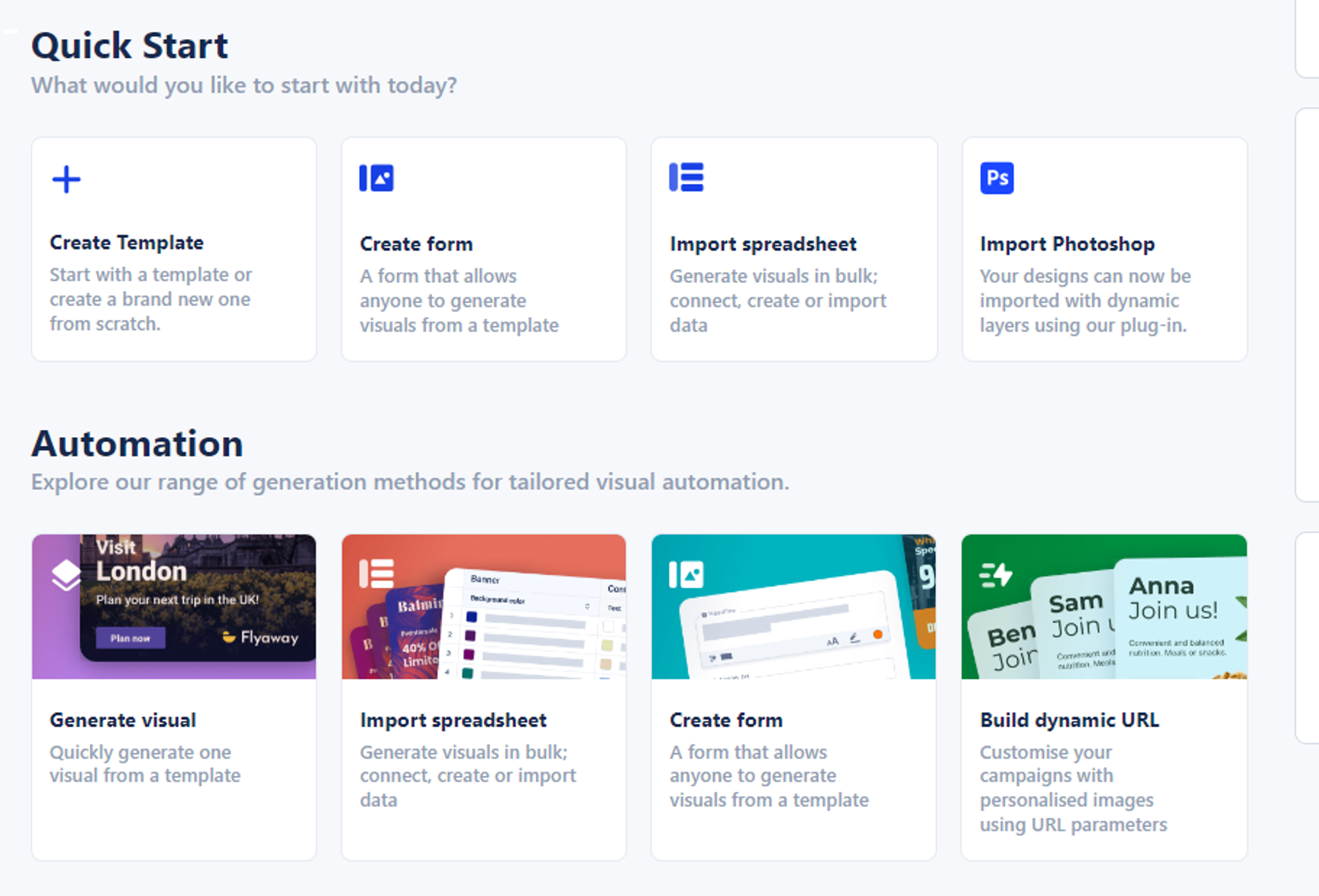
PDF templates are stationary for PDFs. So, when you prepare the file for printing, you can use already-created templates or create one of your own.
The templates that have already been created ensure consistency in structure and layout. This way, you can avoid the formatting issues that usually arise with every new update or project. Plus, you can style content, design layouts, and apply other settings to customize your PDF files.
But, if you don't want to go that way, create your template with Abyssale, as the tool assures you an Easy PDF creation. For that purpose, “Create From Scratch” and build a customized template with specific layouts and defined formatting.
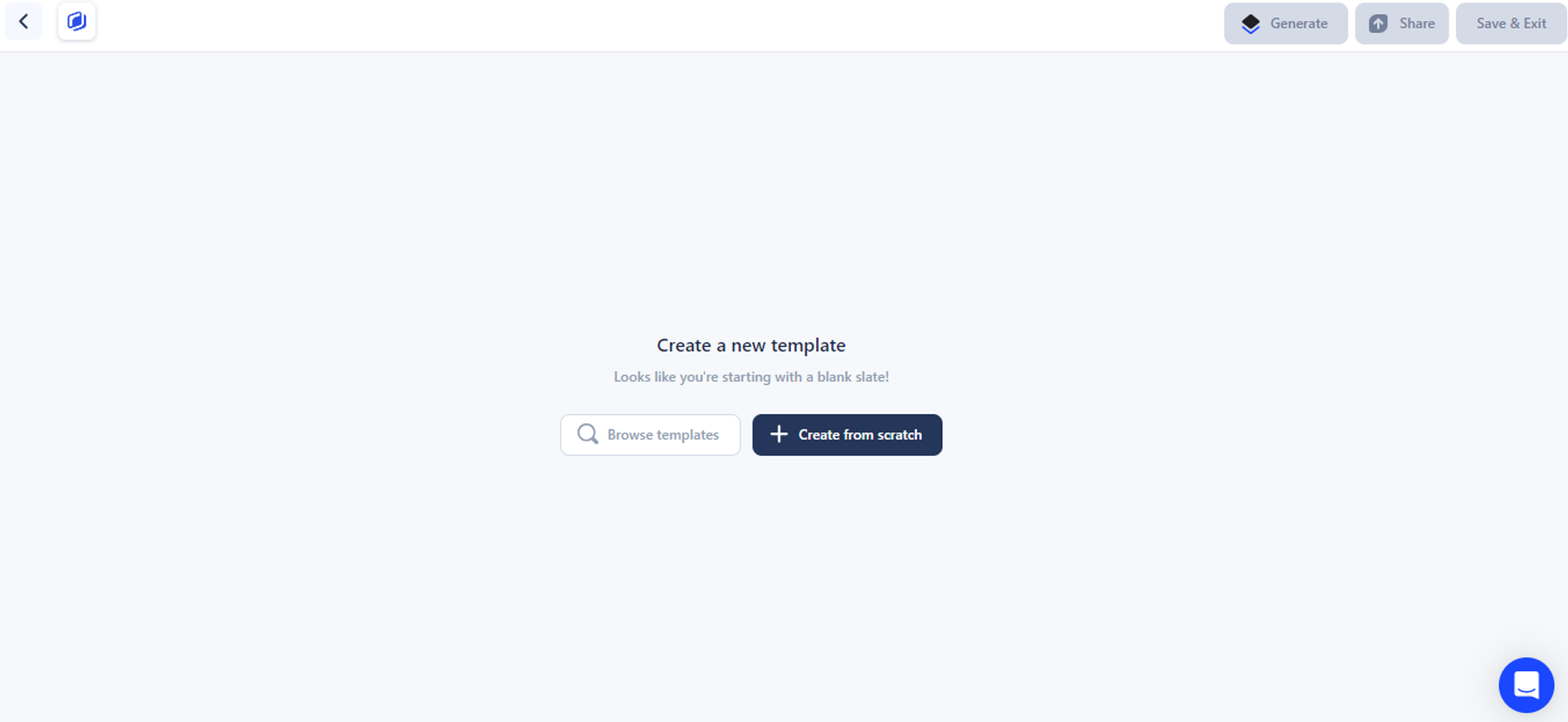
#2. Select The Format
The next step is to choose the format. You must choose a format that assures you of the highest-quality images. Otherwise, the file may not have enough information for printing. PDF is the best format for printing, and here, Abyssale offers you two options: multi-format printable PDF and multi-page printable PDF.
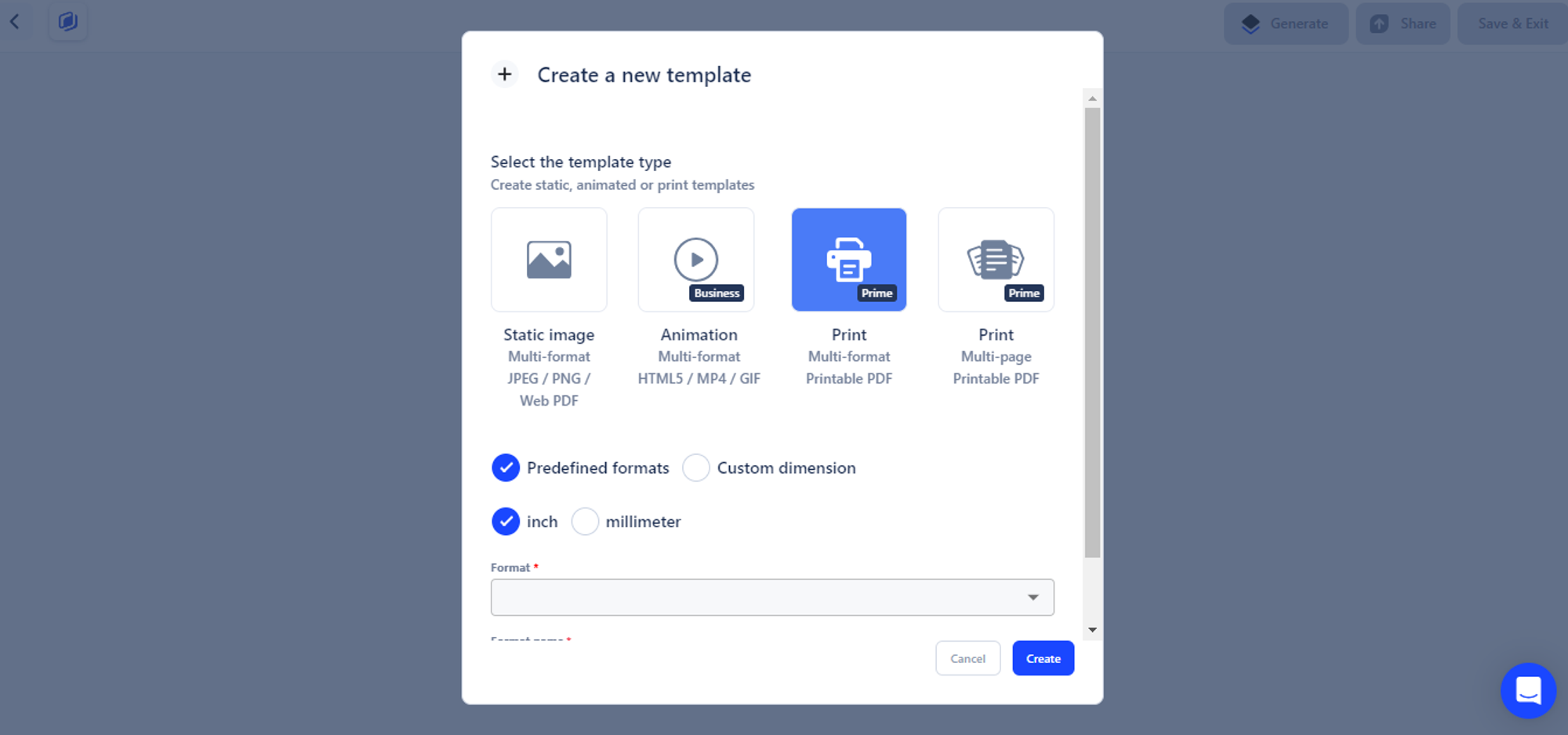
In addition, you can use the predefined formats or customize the dimensions per your needs, requirements, and preferences.
#3. Build Your Document Integrating Pictures, Texts And Colors
After selecting the right format, you can add pictures, colors, and text to your design. When you add the images or pictures, ensure they are high-resolution. The resolution defines how sharp your image will be. Remember to set your PDF at 300 DPI resolution to ensure the optimum image quality during export time.
Abyssal lets you choose the font color, size, and style per your requirements. Also, ensure the fonts are embedded to print the design or document perfectly. As far as the color is concerned, never use RGB colors; always go for CMYK.

Formatting Considerations To Setup Your PDF
To get a professional-looking, high-quality print, you must pay attention to the PDF formatting (margins, bleed, and safety zones) during PDF creation. If you forget to pay attention to these, you may get a printout with a border or white gap around the design.
If not, there can be misaligned or uneven edges or distorted texts and graphics. The print looks unprofessional and unreadable, and you may need to pay more for reprinting. So, let's see how to set all of these to avoid the mistakes that usually ruin the print quality:
#1. Margins
The space between the edge of the design and the trim line is known as the margins. Margins always create a buffer zone for the graphics and text so they don't get distorted or cut off during trimming. So, you must leave a space of 4mm on each side of the document. It will create a safe zone where important text or graphic elements can be placed.
#2. Bleed
Bleed is an extra space that extends beyond the trim line of paper. It ensures that the design will cover the entire surface of the paper without white space or gaps. The concept or idea of bleed is similar to rolling out cookie dough and using the cutters. It is as if the excessive dough is trimmed away and doesn't remain part of the final cookies. As bleed, a standard zone of 3 mm is used on each side of the file or document.
#3. Safety Zones
Along with the bleed area beyond the edges of the page, you should also leave the safety zone or area inside the page boundary. The safety zone is a buffer zone of 25 inches from the cut size on your document's four sides. If there are important elements like graphics or text, you can keep them within the safety zone if they are not bleeding off the page. The safety area or zone ensures that printed documents will look nicer, and there will be no image or text closer to the cut line from being cut off.

Color Management
PDF color settings for digital files differ from the color management of printed media. On the screens, you have limited control over the color consistency. But, in printed media, you have more control over the final appearance of your document. You must use the RGB color mode for the digital files, but for the print-friendly PDFs, you must choose CMYK. To know more about these two, let’s move to the next section:
CMYK vs. RGB
RGB stands for Red, Green, and Blue. It is a color model or space usually used for digital imagery on screens. The light source within your devices mixes the colors (red, green, and blue) to make the color you need. It is an additive color model.
In RGB, all colors start as black, and then different colors are added to make the desired pigment. If you want to make pure white, you will mix green, red, and blue light (at equal intensity). The colors you perceive here are created as a result of transmitted light.
The RGB color model is not the right choice if you are creating a document for print. If you choose the RGB model, you must compromise on PDF print quality. Therefore, experts recommend choosing the CMYK color model for ready for printing documents.
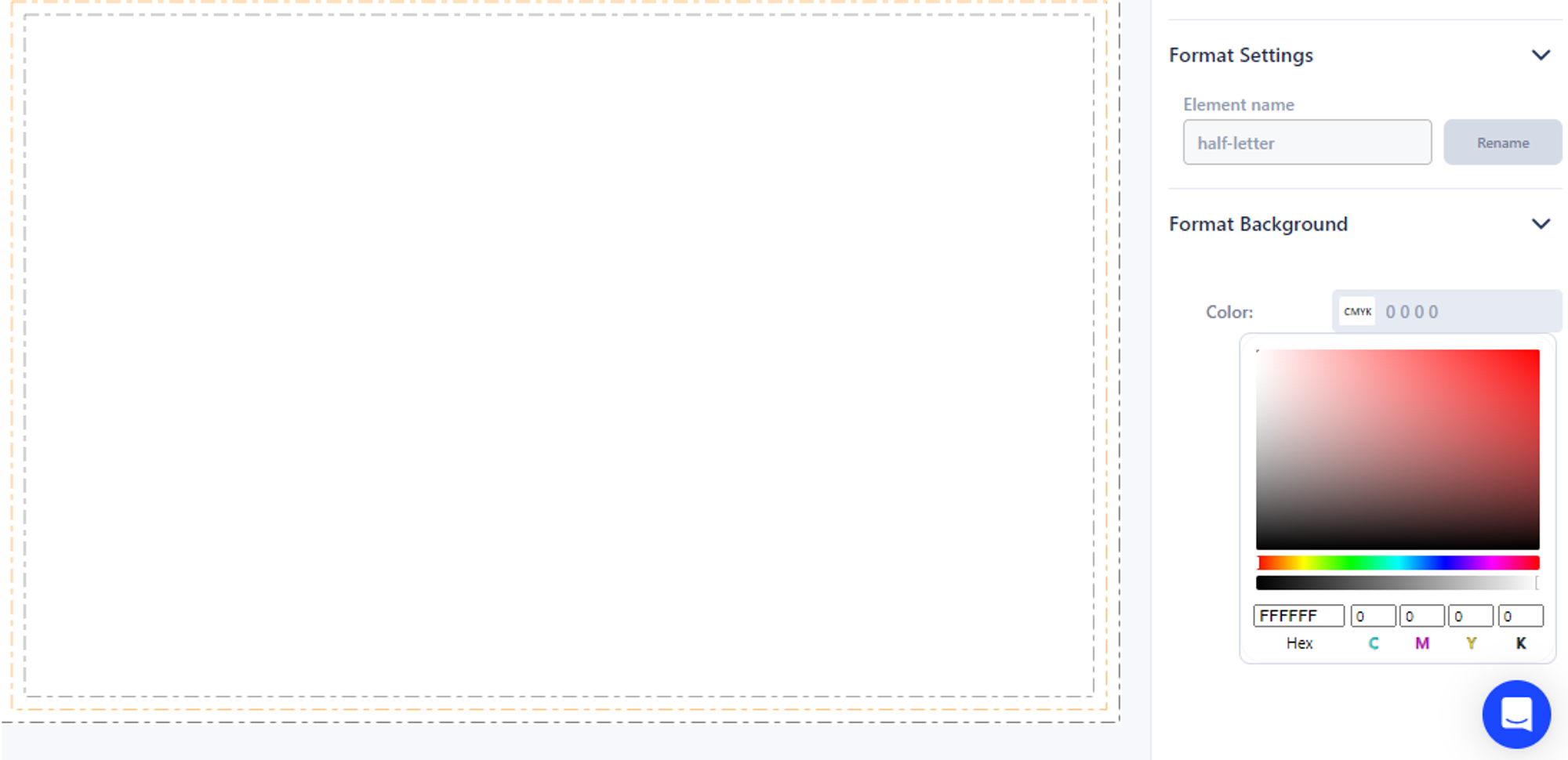
CMYK is a color space for tangible and printing materials. It includes four colors: Cyan, Magenta, Yellow, and Black. In this color model, printers create color by mixing the inks. It is a subtractive mixing, and the color starts as white. In CMYK, each color layer decreases the brightness to produce the required color.
When you mix all the colors, black color is produced. The colors perceived here are a result of reflected light. CMYK always provides accurate and perfect results when printing the document.
How To Export Your PDF for Print?
When you export PDF files for printing, you must ensure that all elements, such as fonts, have been embedded in the document. It ensures that nothing changes in the final printout
when the printer checks or prints your document.
So, when you format your document for the right page size and export your file as a PDF, everything will come out the same as you planned. PDF locks everything in place so that nothing can be changed.
Abyssale Settings
At the time of PDF export, Abyssale assures that your PDF resolution is set to 300 DPI. In this way, the original imported assets are stored, and you get optimal quality at the export time and after printing.
In addition, with Abyssale, you can customize the safe zones and bleed margins and preview them before export. It ensures a perfect printout without errors. Abyssale also stores the CMYK data of imported TIFF images and maintains color consistency when you export files. If necessary, you can add a custom color profile.
Choosing the Best PDF Preset
PDF preset is a group of settings that tell you about saved settings that help you determine the functionality, file size, and quality of PDF files. Plus, these settings can also affect the process of PDF creation. So, you must choose the best PDF presets. You can also create the PDF presets and get customized settings for your unique output requirements.
Abyssale also provides a PDF/X-4 PDF preset. The preset supports advanced features such as ICC color profiles, layers, and transparency. Consequently, you don't need to manipulate the file in your native application before saving it.
How to Optimize Your PDF?

File size limits are all around us. For example, Gmail lets you share file of 25 MB with each email. Likewise, there can be size limits for printable PDF files. So, when you have to print large files, PDF compression helps to shrink the file size. Resultantly, you can print the files easily, quickly, and without facing any issues.
If you don’t know how to compress the PDF file, here we will be sharing different compression techniques:
Compression Techniques
PDF optimization employs different techniques and tools. For example, you can optimize the document online using different free tools, such as PDF. Though it may not have advanced features, you will find it helpful in compressing a few of your PDF files.
To compress the file, go to the "Free PDF Online" site and choose and upload your profile. After that, click on "Start" and begin the optimization process. Once the process is done, click download and get the compressed file without losing quality. Therefore, it is one of the best ways to optimize a PDF file.
However, when you use Abyssale, there is no need for any file optimization tool. Abyssale lets you compress the document directly with the export. Isn't it a better and easier option than those old techniques?
The optimized file you get this way will enhance reading accessibility and ensure content quality and integrity. Plus, the smaller file size improves loading speed. Another advantage is that the file takes less storage space, which makes it more accessible and easier to share electronically.
Above all, optimization improves image quality and text. So, when you print these files, you get the final products that are appealing, clear, and exactly the same quality you want. These files can easily capture users' attention and convey your message effectively.
Ensuring Print Quality
Resolution is an important factor in ensuring the quality of printing materials. By ensuring the images are of higher resolution, you can ensure that printing products will look professional and flawless. Also, the higher resolution images ensure that the resultant images are crisp and that the text easily grabs readers' attention. These types of printouts have a long-lasting impact on the audience.
Remember that the printing document requires a higher resolution than the screen files. For instance, the printable PDF files are 300 DPI (dots per inch), while screen files are only 720 DPI. If you do not set files at 300 DPI, the images may not look the same as they appear on screen or pixelated. So, when you share the file, ensure that each image in your document is 300 DPI.

Besides that, if you want higher-quality images after printing, avoid scaling the image to larger sizes. Otherwise, you may lose the image quality (especially if using lower-resolution images). Aside from that, try to use vector graphics and avoid raster images. Vector images are resolution-independent, and you can easily scale them without losing quality.
How To Test Your PDF?
To manage and ensure higher print quality, you must test your designs or PDF files before printing. At this stage, you will check and ensure no errors (spelling mistakes, color discrepancies, alignment issues, or pixelation). You can also get help from grids, rulers, guides, and print previews to inspect the file carefully.
Plus, preflight check and soft proofing are the other two checks that ensure you have error-free printouts. Let's learn about them both here in detail:
Preflight Check
Preflight check is used to check files before printing for issues that can cause issues in the final printouts. You can use different preflight tools to analyze your file and check its validity for printing. The tools do a wonderful job by inspecting your flight against user-defined values (preflight profiles).
Depending on the profile, these inspections can correct the errors. Preflight can also run the checks, fix the visible areas, and make your PDF file compatible with various standards. Many tools also examine the PDF syntax or the actual PDF structure of your documents.
These checks also identify various other issues and provide you with information, for example:
- Font: The checks will provide you with information regarding all the aspects of fonts in which text has been rendered. Remember that text size is not a font property, as you can use a font with a different text size through the PDF files.
- Text: You will learn how the text has been rendered. For instance, the check will tell you whether the text is slanted, copied, or exported correctly.
- Image: The tools will provide detailed information about image resolution, number of pixels, bit depth, rendering intent, and more.
- Colors: Information related to color characteristics can be found in patterns, spot colors, alternate color spaces, and color spaces.
Soft Proofing
Creating a soft proof is a complex process involving different steps. However, with the soft-proofing technique (also known as monitor proofing), you can check and ensure that printing data has been rendered digitally before printing.
In this technique, the printing profile is checked, and various other tests for color control are done. To get accurate results, you must calibrate your monitor regularly. The color data is displayed on the project or monitor screen so you can see how the final product will look. Soft proofing stimulates the original document.
What are the common issues and troubleshooting, and how Do we solve them?
The PDF files are ubiquitous and versatile. When creating PDF files for printing, you might encounter certain issues. Let’s see what those issues are and how can you troubleshoot them in detail below:
Handling Large Files

PDF files are used to share information with users, but large PDF files can slow down the loading times or may result in a poor user experience. So, in this scenario, it is crucial to reduce the file size, and fortunately, there are multiple ways to optimize large-sized PDF files. For example, you can optimize the file by:
- Remove Unnecessary Embedded Files: Any file included in a PDF file is embedded. The embedded files can be images or other media files (audio or video). Though these files add value to your document, they also occupy much space. To optimize the file size, you can remove unnecessary embedded files.
- Reduce The Number Of Images: Images are the largest contributors to the PDF file size. So, you can easily optimize the file size by reducing the number of images. It will have a significant impact on the file size. You can also compress the images. Various image compression tools are available; you can use any of them. Besides that, you can use vector graphics as they are resolution-independent. You can scale up or down those images without compromising or losing the quality.
- Use Built-In Fonts: Instead of embedding the fonts, you can use built-in or standard fonts. It will reduce the file size and ensure that your file loads faster.
- Use PDF/A: PDF/A is a standardized format that preserves the formatting and assures that content will remain consistent (regardless of the software or hardware you use to view the files).
You Finally Don’t Like Some Elements Of The Document Once Printed
Usually, the artwork or images you have added to the PDF file look clear, crisp, and high-quality on the screen. But there is no guarantee that they will appear the same after printing. For instance, images can look fizzy after printing if you have printed them with the wrong art file or at a lower resolution.
To ensure the quality and clarity of the images, Abyssale ensures that each of your images is 300 DPI. But even then, if you are unsatisfied with the image quality or the final product does not look the same as you expected, Abyssale has a solution to your problem.
You can change specific assets in your document and alter certain elements within the PDF. These changes will not significantly change the overall design of your document, and the good part is that they are all easier to make.
Once you have made the required changes, preview your file. Here, you can find out where amendments are needed. After making the required changes, you can share the file for printing.
Now, start easily
A print-ready PDF is a document converted to be printed effectively without issues during printing. These ready for printing documents will have the correct file size, perfect picture resolution, adjusted crop marks, optimized font quality, and no distortion. Preparing the print-ready PDF was once a challenging task, but not anymore, as now you have Abyssale.
Abyssale provides you with a wide range of designs or templates already created. You can choose any of them or create your design from scratch. To create the design from scratch, choose the format and add the images, text, and color to your document. After that, format the file by adding bleed, margins, and safety zones. After finishing the design, you can export your document as a PDF/X-4 file and share it for printing.
Get started for free
Master Abyssale’s spreadsheet
Explore our guides and tutorials to unlock the full potential of Abyssale's spreadsheet feature for scaled content production.

FFMPEG : How to overlay an image on a video?
